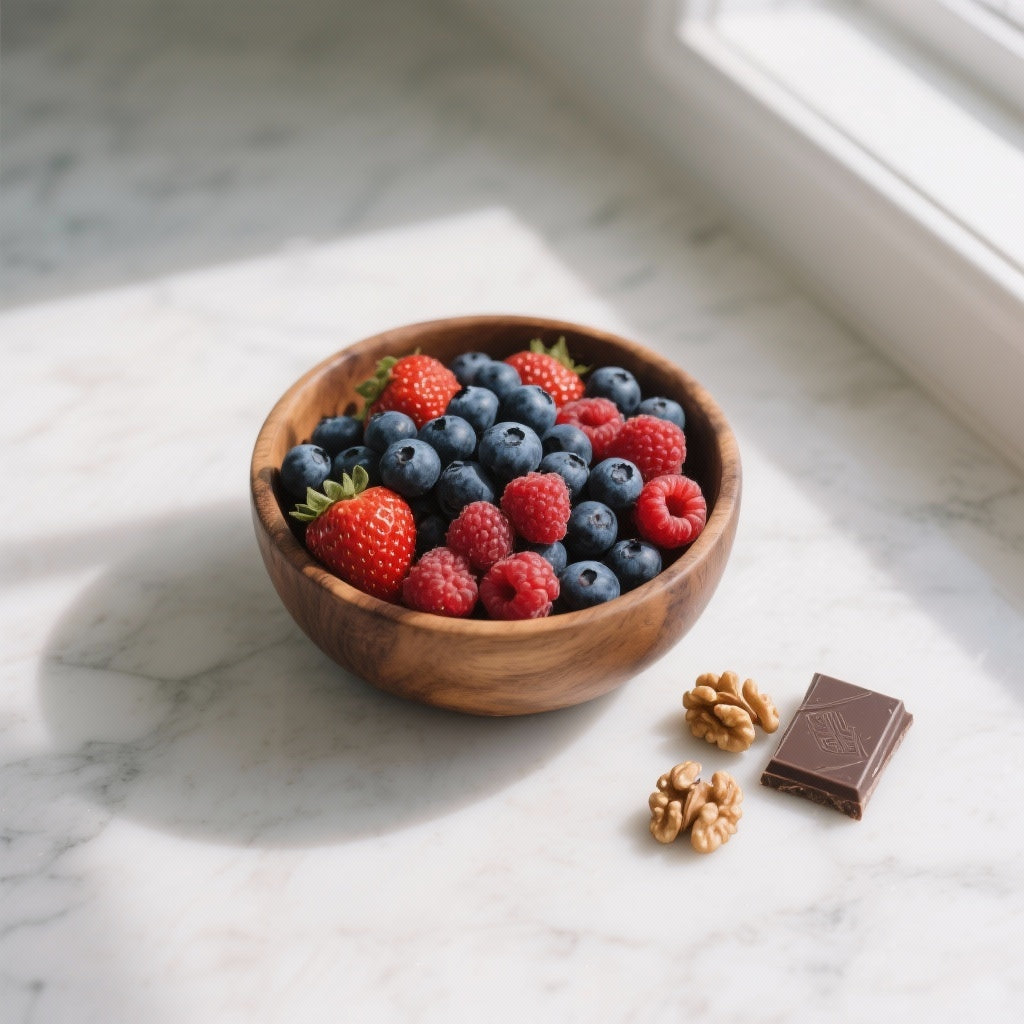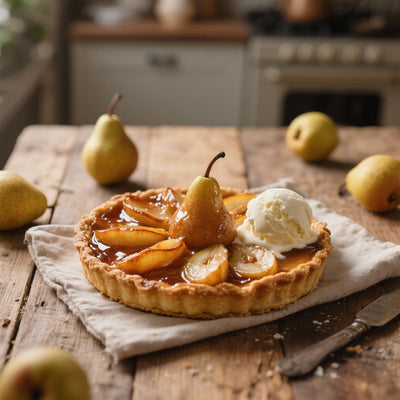As the seasons change, or simply to maintain excellent health year-round, strengthening your immune system is a priority. But did you know that the key often lies in what you eat? Faced with daily aggressions—pollution, stress, an unbalanced diet—our bodies wage a constant battle. Antioxidants are your best allies in this mission. These powerful molecules, found in abundance in certain foods, fight free radicals responsible for cellular aging and weakening our defenses. This article is your ultimate guide to transforming your diet into a true shield. We'll explore in detail the top 10 antioxidant-rich foods, understand their mechanisms of action, and give you practical tips for easily incorporating them into your daily routine.
Understanding Antioxidants and Immunity: The Winning Duo
Before diving into our delicious list, it's essential to understand why this duo is so crucial to your well-being. The concept may sound scientific, but its application is simple and delightful. It's about giving your body the right tools to defend itself.
What exactly is an antioxidant?
Imagine the cells in your body as tiny machines working tirelessly. This process generates waste products, unstable molecules called free radicals . In excess, these free radicals cause what is known as oxidative stress , a phenomenon that damages healthy cells, including those of our immune system. Antioxidants are the superheroes of this story: they neutralize free radicals before they can cause damage, thus protecting the integrity of our bodies. They are found in various forms: vitamins (C, E), trace elements (selenium, zinc), and above all, a vast family of plant compounds called polyphenols (flavonoids, tannins, etc.).
The crucial link between oxidative stress and the immune system
A high-performing immune system relies on the rapid communication and proliferation of its cells (lymphocytes, macrophages, etc.). Oxidative stress disrupts these fundamental processes. It can weaken the membranes of immune cells, making them more vulnerable, and alter the signals they send each other. As a result, the immune response becomes slower and less effective. By consuming foods rich in antioxidants, you provide direct protection to your body's frontline soldiers, allowing them to function at their full potential. It's a direct investment in your ability to fight infections.
The Top 10 Antioxidant Champions for Iron Immunity
Now that the basics are covered, let's get down to business. Here's a list of foods to prioritize to stock up on these precious protectors. Variety is key, as each food provides a unique cocktail of antioxidants with complementary benefits.
-
Berries (Blueberries, Strawberries, Raspberries, Goji berries)
Small in size but immense in their benefits, berries are veritable antioxidant powerhouses. Blueberries, in particular, are famous for their anthocyanin content, the pigments that give them their deep blue-violet color. These compounds have demonstrated their ability to strengthen the functions of immune cells. Vitamin C, also abundant, is essential for the production of white blood cells.
Helpful tip: Fresh when in season, frozen the rest of the year to preserve their properties. Add a handful to your yogurt, smoothie, or morning porridge.
-
Dark Chocolate (70% cocoa and above)
Good news for those with a sweet tooth! Cocoa is one of the richest sources of flavanols and polyphenols. These powerful antioxidants help reduce inflammation and protect blood vessels, promoting good circulation so immune cells can move effectively throughout the body. The higher the percentage of cocoa, the greater the concentration of antioxidants (and the lower the sugar content).
Practical tip: One or two squares of dark chocolate with at least 70% cocoa at the end of a meal for a touch of healthy pleasure.
-
Spinach and Leafy Green Vegetables
Spinach, kale, Swiss chard... all these vegetables are nutritional powerhouses. They are packed with vitamin C, beta-carotene (a precursor to vitamin A), and a multitude of antioxidants such as lutein and zeaxanthin . These nutrients work together to protect cells from oxidative damage and support the function of immune barriers, such as those in the gut and respiratory tract.
Practical tip: To preserve as many nutrients as possible, eat them raw in salads or steamed very lightly.
-
The Artichoke
Often underestimated, the artichoke is one of the vegetables richest in antioxidants. It notably contains cynarin and silymarin , compounds known for their protective effect on the liver. A healthy liver is essential for immunity, as it filters toxins from the blood and produces important immune proteins.
Practical tip: Enjoy steamed artichoke hearts with a lemon and olive oil vinaigrette.
-
Nuts and Seeds (Pecans, Walnuts, Sunflower Seeds)
Pecans, walnuts, and sunflower seeds are excellent sources of vitamin E , a crucial fat-soluble antioxidant. It protects the fatty membrane of immune cells from damage, a role that water-soluble vitamin C cannot play. This complementary action is fundamental for comprehensive cellular protection.
Practical tip: A small handful (about 30g) as a snack or sprinkled on your salads for a crunchy and nutritious addition.
-
Green Tea
Green tea is an age-old beverage whose benefits are well-established. Its richness comes from catechins , and more specifically from epigallocatechin gallate (EGCG), one of the most powerful antioxidants in the plant world. EGCG has demonstrated its ability to modulate the immune response and increase the number of regulatory cells that prevent autoimmune reactions.
Practical tip: Let your green tea steep for 3 to 5 minutes in water at 80°C (not boiling) to extract the maximum amount of catechins without developing bitterness.
-
Red Beans and Legumes
Kidney beans, like lentils or chickpeas, are a fantastic source of fiber, plant-based protein, and... antioxidants! They contain anthocyanins (similar to those in blueberries) which give them their rich color. Regular consumption helps maintain a healthy gut microbiota, which plays a major role in our immune system (nearly 70% of our immune cells reside there).
Practical tip: Incorporate them into your soups, salads, chilis or prepare a delicious homemade hummus.
-
Garlic
Used for centuries as a natural remedy, garlic owes its properties to sulfur compounds, notably allicin , which is released when garlic is chopped or crushed. Allicin has antimicrobial and immune-boosting effects, increasing white blood cell activity. It's a true powerhouse for your defenses.
Practical tip: To maximize allicin formation, crush or chop the garlic and let it sit for 10 minutes before cooking.
-
Turmeric
This golden spice is a star in Ayurvedic medicine. Its main active compound, curcumin , is an exceptional antioxidant and anti-inflammatory. Since chronic inflammation weakens the immune system, curcumin helps regulate the inflammatory response and support overall immune function.
Practical tip: Always combine turmeric with a pinch of black pepper. The piperine in pepper increases the body's absorption of curcumin by 2000%.
-
Beetroot
The vibrant color of beets comes from betalains , antioxidant pigments with strong anti-inflammatory properties. Beets are also rich in natural nitrates, which are converted into nitric oxide in the body. This compound improves blood circulation and helps deliver oxygen and nutrients to cells, including immune cells.
Practical tip: Consume it raw, grated in salads, or as juice to fully benefit from its properties. Cooking can reduce its antioxidant content.
Interesting Fact: According to a study from Tufts University, foods are evaluated on an ORAC (Oxygen Radical Absorbance Capacity) scale to measure their antioxidant power. Berries, spices, and dark chocolate consistently rank at the top of this list.
How to easily incorporate these superfoods into your daily routine?
Knowing the list is one thing, applying it is another. The goal is not to change everything overnight, but to adopt small, sustainable habits that will make a big difference in the long run.
The Power of Colors on Your Plate
A simple and visual way to ensure a varied intake of antioxidants is to aim for "eating the rainbow." Each color in fruits and vegetables corresponds to different families of phytonutrients and antioxidants. The red of raspberries (anthocyanins), the orange of carrots (beta-carotene), the green of spinach (lutein), the blue of blueberries (anthocyanins), the purple of eggplants... Aim for at least three different colors at each main meal.
A typical day to boost your immunity
- Breakfast: A bowl of porridge with blueberries, a few pecans and a pinch of cinnamon.
- Lunch: A large spinach salad with grilled chicken, slices of raw beetroot, sunflower seeds and a garlic and lemon dressing.
- Snack: A green tea accompanied by two squares of 85% dark chocolate.
- Dinner: A vegetarian chili with red beans, tomatoes and a touch of turmeric, served with quinoa.











